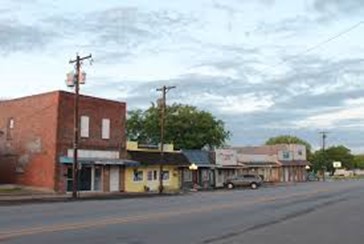
Several persons have asked on media sources, if books about Greenville exist. The answer is definitely. Many were written by citizens who knew the early settlers, who heard stories those old timers repeated, and may have actually witnessed historic events.
During the 1960s and 1970s genealogy was a great hobby for residents everywhere, including Greenville. A small collection of books could be found at the library on Lee Street. When the present library was built, a large area was filled with books, journals, maps, and news papers dating back to the 1890s; a few went back to the 1840s when Hunt County and Greenville were created. Three microfilm machines made the use of old newspapers, census records, and other essential genealogy materials quickly available.
One of these excellent genealogists was Mrs. Frances Terry Ingmire whose family settled in the Weiland area. It is her four volume Archives and Pioneers of Hunt County that I am using today. Mrs. Ingmire self-published volume I in 1975 while she was living in Creve Coeur, Missouri. That volume contains brief histories of the small towns in the county.
Quinlan did not start out with that name. The Roberts family, whose son was Governor O.M. Roberts, donated $500 to the Houston and Texas Central (H&TC RR) Railroad that began in Houston and moved northward. The Roberts’ donation paid for right of way from Terrell to a point I ½ miles from present day Quinlan. When the track was laid, the owners of the H&TCRR named the community that grew there Roberts. All went well until the H&TC developed financial problems in the 1890s.
Hetty Green, a fabulously wealthy tight wad who had lots of investments on Wall Street, bought the Houston and Texas Central for her twenty-four-year-old son. The son, Col. H. E. R. Green, not related to the Green family living and farming northwest of Roberts, took over the rail line and made many changes.
The depot at Roberts moved to a new site we know as Quinlan, named by Hetty Green in honor of an old friend in New York City. Stores moved from Roberts to Quinlan and located facing the railroad. A fire destroyed most of the frame businesses in December 1894. Brick structures were then built. The first school at Roberts was abandoned for a new one in Quinlan. The Masonic Lodge at Roberts burned in late 1894 and was moved Quinlan under the name Wade Lodge #534. In 1895 a Methodist Church was organized by a Baptist Church in 1896 and a Disciples of Christ Church a little later.
E. H. R. Green owned the railroad until his death in 1936. His story deserves a later article as he was quite a person and entrepreneur. The train line moved on to Commerce and in 1958 it was closed from Commerce to Ennis. Some of you may have seen the last train out of Greenville.
Mrs. Ingmire and other ladies of her time wrote a tremendous number of books containing stories of people, events, and places. Unfortunately, the books and other materials have been victims of COVID-19. The Walworth Harrison Public Library was closed during the pandemic, but it is now open for genealogists on Mondays from 11 A.M. to 1 P.M. Call and ask for Danny Plunkett to reserve a time.
